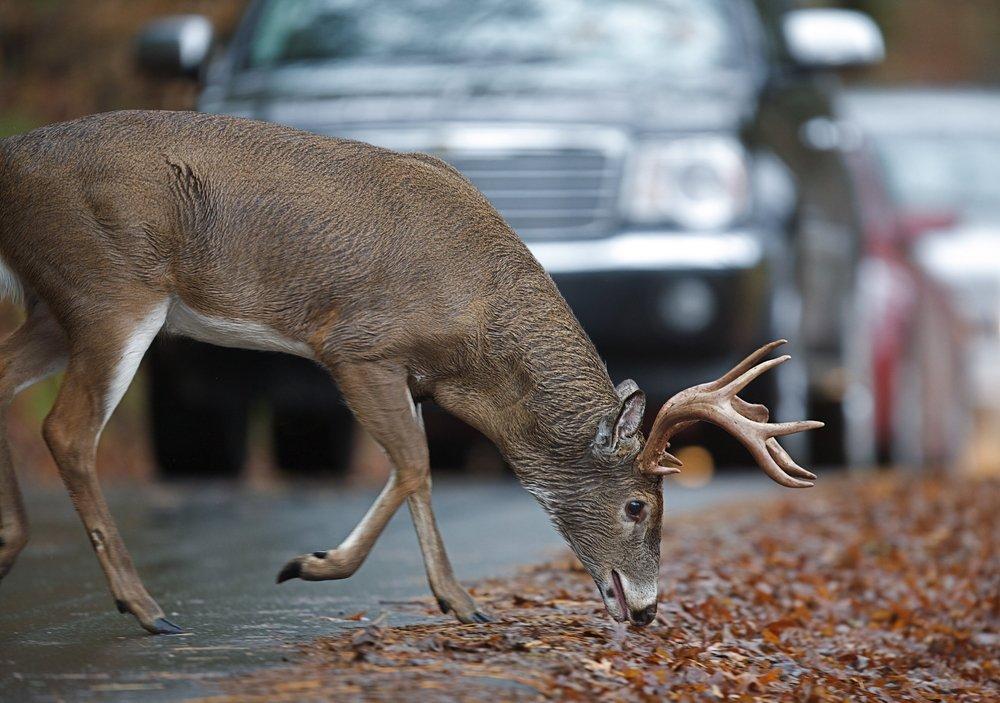Is It One of the Biggest Threats to Modern Whitetails?
Urbanization. Urban sprawl. Habitat Destruction. It goes by different names. But its true name — the death of deer hunting. Or is it? That's what we're here to discuss.
Before we delve in, it's important to note that whitetails thrive on early successional edge habitat. And edge habitat often comes with semi-urban areas, such as suburbs. In fact, such areas are more inviting to whitetails than big blocks of unbroken mature timber.
Dr. Joe Caudell, a state deer biologist with the Indiana Department of Natural Resources, spoke to this point.
Deer populations are affected by a number of factors including natural habitat succession (i.e. the slow progression from young forests to old forests, especially large unbroken tracts of large forest), disease, predators, weather, and a number of other limiting factors, Caudell said. I have not seen any researcher who has quantified and ranked the various risks of each of the limiting factors to white-tailed deer populations. This would be location-specific anyway and would need to be assessed for a number of different areas, habitat types that it is being converted from, type of suburban development, and other factors.
White-tailed deer thrive on disturbance and fragmented habitat, Caudell continued. It is possible to get very large deer populations in suburban areas, especially where there are tracts of trees between houses for cover. What suburban areas often affect is the ability of sportsmen and sportswomen to access those deer populations for hunting. So, when deer habitat and/or farmland is converted to suburban area, hunters who once had access to those areas for hunting often are not able to maintain that access. In the absence of hunters and the creation of large amount of edge that often occurs with modern suburban developments, deer populations can increase. Here in Indiana, we created a program called the Community Hunting Access Program (CHAP) to address this very situation. CHAP helps communities get hunters back into these areas, which often contain abundant deer.
As Caudell mentioned, when once-rural landscapes become urbanized, hunters generally lose access to those lands, and hunting becomes almost non-existent. So, while — under the right circumstances — deer populations can remain stable (and even increase) under such conditions, it still damages our hunting heritage (and conservation) in the short go. That seems to be the biggest problem with urbanization — access.
While suburban (not matured urban areas) pose problems for hunters, in many cases, they offer ideal habitat for whitetails. Recent research conducted by Caudell on Sea Pines Plantation in South Carolina proves it.
As for the evidence that white-tailed deer thrive in suburban landscapes, we can see that when we simply work in these areas, Caudell said. Over my career, I have worked on several urban projects where the deer population was significantly higher than in the surrounding natural habitat. Much of the research presented there was in suburban landscapes. From the early 1990s, the research in urban landscapes has only increased. Another example is in Salt Lake City, Utah, and the surrounding suburbs. Mule deer thrive better in these areas than in their natural habitat, so they have programs to move overabundant deer from suburban areas out to areas where they can be hunted. The best way to see this body of research is to use Google Scholar and use keywords such as deer, abundance, and suburban and you will get numerous hits. At this point, no one is really disputing that white-tailed deer thrive in suburban landscapes, so I doubt that you would find a specific paper that examines whether deer can thrive in these areas, but if you read many of the introductions of urban deer research papers, they often describe populations that are very large.
In typical natural coastal island habitat, we might expect to see somewhere around 20 to 30 deer per square mile (as best as I can remember), but on Sea Pines Plantation, we saw deer populations over 100 per square mile, Caudell continued. A typical limiting factor on these islands is the food quality and the parasites, such as ticks. But forage quantity and quality can go up in these suburban areas and often insects are controlled. So, the carrying capacity often increases, but again, this is specific to the area and the specific development style of the suburban development.
So is urbanization the death of deer hunting. The true answer, yes and no. But probably more no than yes. At least for now. But it's tricky — in the U.S., we lose approximately 6,000 acres of natural habitat every day. In my mind, despite what some might say, that translates to reduced wildlife populations. Reduced wildlife populations means fewer hunters. And fewer hunters leads to less conservation dollars to protect wild animals and wild places. See the cycle?
The hard thing is, other than purchasing land to create more wildlife management areas (WMAs), state wildlife agencies can't do much to conserve habitat.
As to what agencies can do about this issue, this is typically outside the scope of typical wildlife agencies, Caudell said. As this issue goes into how private individuals and businesses decide to use their own land. State wildlife agencies work to manage wildlife wherever it exists.
James Kelly with the Tennessee Wildlife Resources Agency (TWRA), said much the same in response to Realtree.com's interview questions asking how big of a threat urbanization is to whitetails. And he acknowledged that, while deer can thrive in suburban areas, vast habitat reduction still often results in a net loss of deer and hunting heritage.
This is not something that TWRA has researched directly, but we do perceive it is a significant factor in our statewide deer management program, Kelly said. We know deer are generalists and live just about anywhere, but we suspect this has caused a net decline in deer habitat and deer hunting access.
I can't speak to other organizations, but state wildlife agencies can help facilitate development of urban hunting programs and provide technical assistance to local governments, Kelly continued. Work with local governments to address city ordinances and develop urban/suburban hunting programs.
When asked if the TWRA felt that urbanization was the biggest threat to whitetails, they said no.
TWRA believes Chronic Wasting Disease (CWD) is the biggest threat to deer and deer hunting in Tennessee, Kelly said.
In the long run, once suburban areas become more than that, and reach maximum development, deer populations quickly decline, and even crash, in many cases. As available habitat decreases, so do deer populations. Just because deer are capable of thriving in an area where humans have a heavy hand, doesn't mean that's what's best for the species long-term.
Luckily, federal public land acquisitions (i.e.: Natural Resources Management Act S. 47), conservation organization land-conservation efforts (Whitetails Unlimited, Quality Deer Management Association, National Deer Alliance, National Wild Turkey Federation, Delta Waterfowl, Ducks Unlimited, etc.), state wildlife agency efforts, and numerous other efforts, all culminate to do what's already been achieved. But we need to do more. We have to conserve habitat. We have to manage deer populations. We have to protect our hunting heritage.
Don't Miss: What We Know About the Recent News of a CWD Cure | Why Chronic Wasting Disease Shouldn't Scare You Away from Deer Hunting
Are you a deer hunter wanting to learn how to accomplish your goals? Check out our stories, videos and hard-hitting how-to's on deer hunting.








